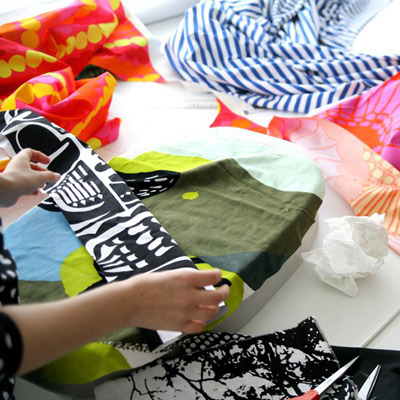Interview: Minna Kemell-Kutvonen and Sami Ruotsalainen
Two Marimekko creatives discuss the brand’s learning culture and their latest “weather diary” collection
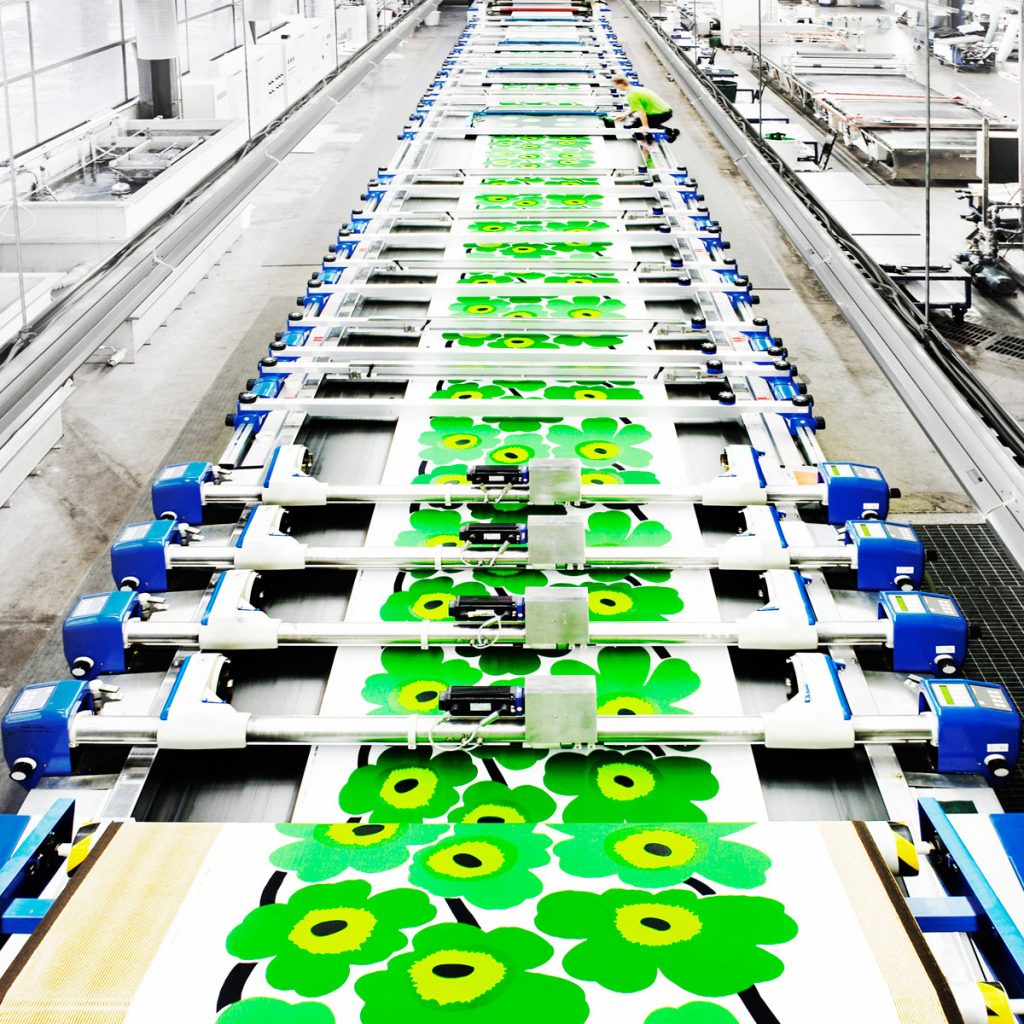
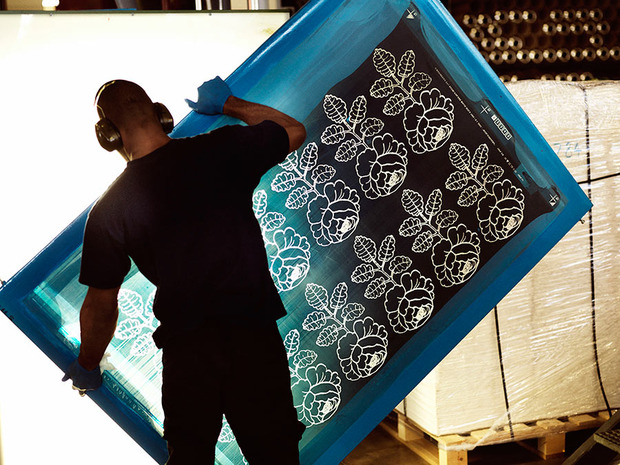
As the Helsinki-based brand gears up to celebrate the 50th anniversary of its iconic Unikko (poppy) print,
Marimekko is still very much the prolific and relevant design house that it was when it was founded by Viljo and Armi Ratiain in 1951. The brand was launched in an effort to combat and revitalize the dull palette that characterized post-World War II Finland, so painters and artists were commissioned to create wild and vivacious prints that didn’t resemble anything else on the market. It is this tradition of reaching out to unlikely collaborators and visionaries that not only gave the heritage company its start, but is also what has kept it at the forefront of international design for over half a century.


The company consistently attracts young talent from Finland and beyond, while also maintaining a roster of talent that has been carefully developed over the years. To figure out what keeps attracting designers in such a competitive market, we spoke with creative director Minna Kemell-Kutvonen, as well as one of the brand’s latest success stories, designer and ceramist Sami Ruotsalainen, whose work now defines Marimekko’s tableware collection.
Sami, what first brought you to Marimekko and what was your background?
I first came to Marimekko after applying for a summer job in 2001. It was this summer apprenticeship that brought me into the company and kept me returning until I completed my degree at the Aalto University of Art and Design in 2005 in ceramics and glass design.
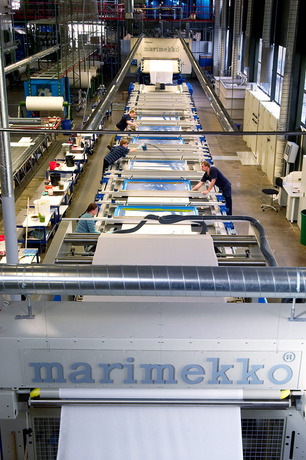
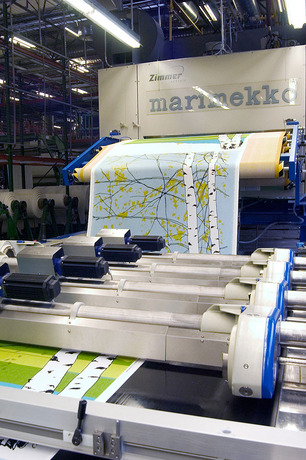
I guess what first attracted me to Marimekko was the possibility of working with textile design. I was always intrigued by the subject and I knew that Marimekko had a strong apprenticeship program for artists who were curious about learning fabric design. In Finland, there are not many design houses and for many young artists Marimekko is known as a place where you can experiment and train with some of the country’s top designers.
When I first came to Marimekko, I was given the chance to hop around and work everywhere from the art studio to the printing studio where each fabric is made. In the 10 years I’ve worked there now, I’ve gone from knowing nothing about the textile industry to learning things that I could never have gotten from school. I think the best way to learn is to ask, and in this design house there is an incredible wealth of knowledge and everyone is encouraged to participate.

Minna, you’ve worked at Marimekko for almost 25 years and in 2008 you became the creative director of interiors. What do you think young designers see in Marimekko and what has kept you at the brand for so long?
Here, we joke about it as the Marimekko phenomena. But, it’s true that being a part of Marimekko is more of a lifestyle than a job. Our design team is a creative community. It’s a rare thing to find and I think that’s what has kept me here over the years. You never stop learning at Marimekko, it is a vital part of the company culture. Like Sami, I am constantly growing as a designer, thanks to my colleagues.
I think for young designers it is well known that Marimekko is a house that can be a starting point for careers. It’s expected that the older generations of designers will pass on their knowledge to the next generation and so on. It’s a strong family and I think young designers see it as a place not only for their work to get exposure, but also for them to get exposure to experts.
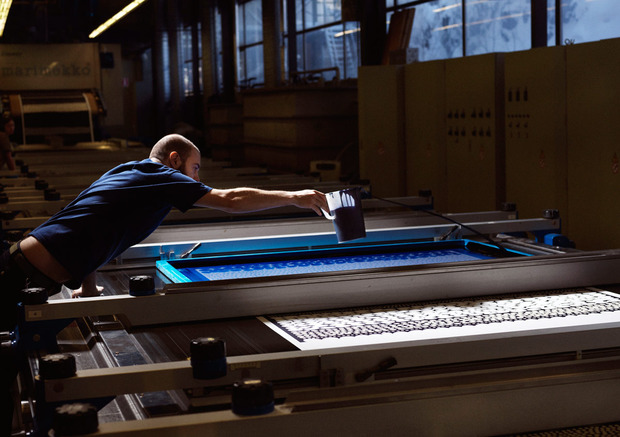
There are a lot of reasons that designers come to our company both young and old but I think that in the end the biggest draw is the chance for them to be themselves. It’s a place for artists who like to take agency with their work. At Marimekko, everyone is encouraged to be themselves and to work in whatever way serves them best. My colleagues are a truly unique group of individuals and that is perfectly accepted. In fact, it’s what we want.
If every designer is given the chance to design the way they want, how do you come up with cohesive collections?
Minna: We begin each season by coming together collectively as a group to discuss our ideas and recent inspirations. For example, this season we started with the idea of a weather diary. In Finland, we have very long periods of both light and darkness. Weather is a big part of our daily lives and it is these distinct seasons that mark time. Traditionally in Finland, we keep these weather diaries that help us keep track of the seasons by recording daily entries about the temperature, the weather and when we first start to see different crops and plants appear. These weather diaries enable us to track the differences in our environment year to year and help us better anticipate when we will first see things like blueberries appear.

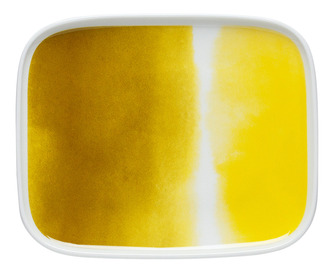
As we began to have discussions about the weather, one of our head fabric designers began bringing in images from a storm that she photographed on the waters of the Gulf of Finland. They were incredibly dramatic and dark, but even in the rain they were incredibly beautiful. As a group, we discussed the way that even in the worst weather there are some really beautiful moments. And, so we decided to pull out the best things about these different extremes and highlight them with a collection.
How does your new tableware collection fit into this idea of a weather diary? How do you create ceramics that complement the collection as a whole?
Sami: I think as a ceramist I am always thinking about what Marimekko would be as a shape. When thinking about a collection I always have to remember that the shape of my pottery has to be as bold as the prints. The pattern and shape must be balanced in order to create a composition that is better and stronger than its parts.
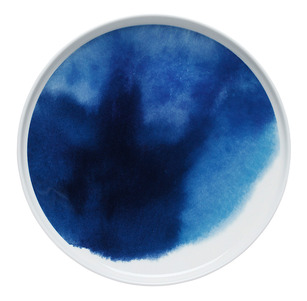
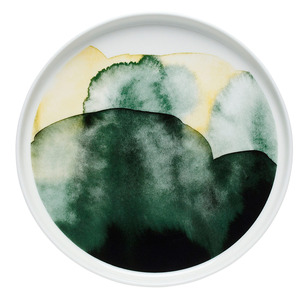
For the weather diary collection I worked with a painter, who created these beautiful watercolors for each of my pieces. Simple and perfectly balanced with the white space of my work, her paintings brought my shapes to live. For my part, I wanted to create iconic and timeless pieces that didn’t dominate the composition but rather enhanced this idea of cyclical seasons. Like every collection I create, I also tried to keep in mind that each piece is an individual. I want to make sure that if someone buys a teacup or the entire set they have something special that stands on its own. With this collection, thanks to her watercolors, each piece also represents an unique moment in nature.
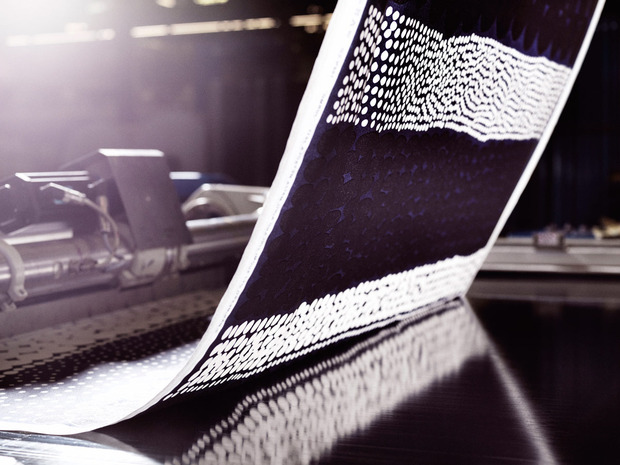
How do you see Marimekko evolving? What’s next for the brand?
Minna: Still based in Helsinki, our company is firmly rooted in our history and the design philosophy that has evolved out of it. We are privileged to be located in a place that exists between East and West, so we’re constantly exposed to both the ornate and colorful designs of the East and the more minimalist aesthetic of the West.
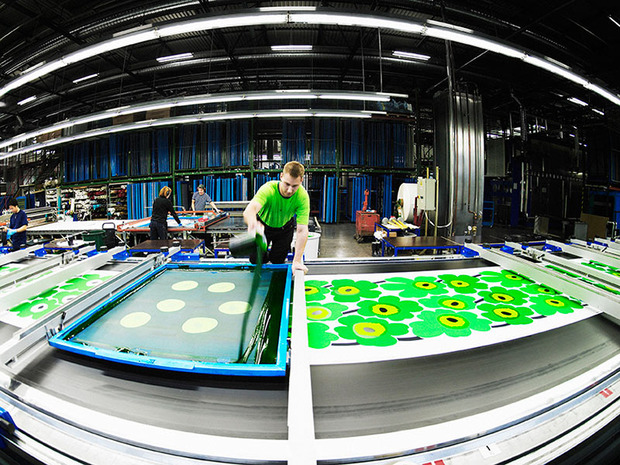
Together these two influences have created a design house that not only focuses on creating beautiful things, but things that are also pragmatic and—above all—functional. As we grow, we will continue to create products that address everyday problems and inspire with their sophistication and color.
Marimekko pottery, textiles and a range of wares sell online and in stores around the world. Images courtesy of Marimekko
